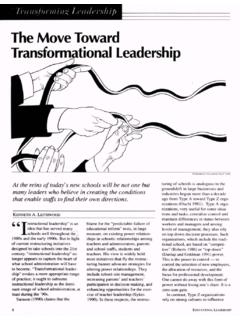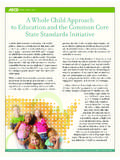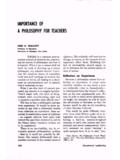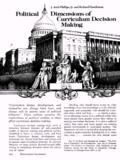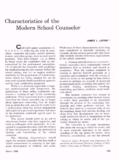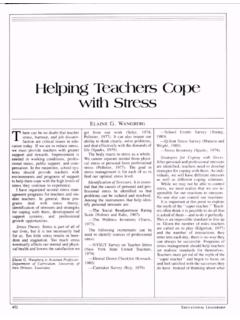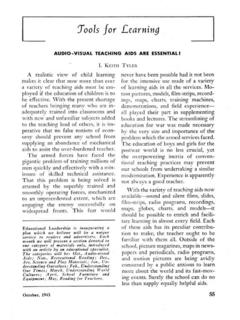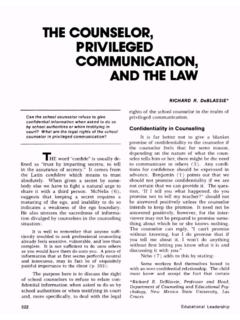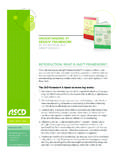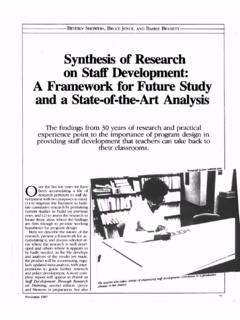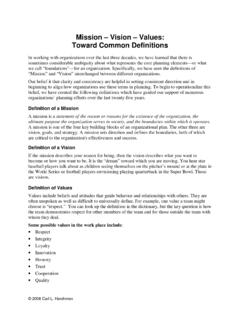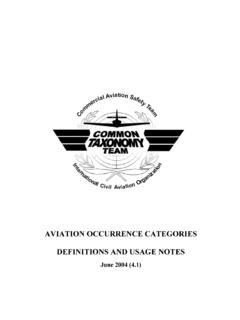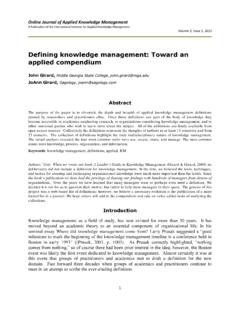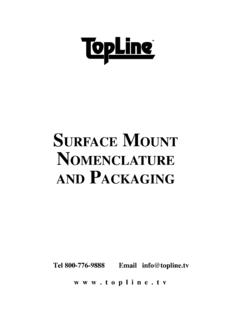Transcription of Mapping a Route Toward Differentiated Instruction // Carol ...
1 September 1999 September 1999 | Volume 57 | Number 1 Personalized Learning Pages 12-16 Mapping a Route Toward Differentiated InstructionEven though students may learn in many ways, the essential skills and content they learn can remain steady. That is, students can take different roads to the same Ann TomlinsonDeveloping academically responsive classrooms is important for a country built on the twin values of equity and excellence. Our schools can achieve both of these competing values only to the degree that they can establish heterogeneous communities of learning (attending to issues of equity) built solidly on high-quality curriculum and Instruction that strive to maximize the capacity of each learner (attending to issues of excellence).
2 A serious pursuit of differentiation, or personalized Instruction , causes us to grapple with many of our traditional if questionable ways of "doing school." Is it reasonable to expect all 2nd graders to learn the same thing, in the same ways, over the same time span? Do single-textbook adoptions send inaccurate messages about the sameness of all learners? Can students learn to take more responsibility for their own learning? Do report cards drive our Instruction ? Should the classroom teacher be a solitary specialist on all learner needs, or could we support genuinely effective generalist-specialist teams? Can we reconcile learning standards with learner variance?The questions resist comfortable answers and are powerfully important.
3 En Route to answering them, we try various roads to differentiation. The concreteness of having something ready to do Monday morning is satisfying and inescapable. After all, the students will arrive and the day must be planned. So we talk about using reading buddies in varied ways to support a range of readers or perhaps developing a learning contract with several options for practicing math skills. Maybe we could try a tiered lesson or interest centers. Three students who clearly understand the chapter need an independent study project. Perhaps we should begin with a Differentiated project assignment, allowing students to choose a project about the Middle Ages. That's often how our journey Toward differentiation nature of teaching requires doing.
4 There's not much time to sit and ponder the imponderables. To a point, that's fine and, in any case, inevitable. A reflective teacher can test many principles from everyday interactions in the classroom. In other words, philosophy can derive from can't skip one step, however. The first step in making differentiation work is the hardest. In fact, the same first step is required to make all teaching and learning effective: We have to know where we want to end up before we start out and plan to get there. That is, we must have solid curriculum and Instruction in place before we differentiate them. That's harder than it Inside Two ClassroomsMr. Appleton is teaching about ancient Rome. His students are reading the textbook in class today.
5 He suggests that they take notes of important details as they read. When they finish, they answer the questions at the end of the chapter. Students who don't finish must do so at home. Tomorrow, they will answer the questions together in class. Mr. Appleton likes to lecture and works hard to prepare his lectures. He expects students to take notes. Later, he will give a quiz on both the notes and the text. He will give students a study sheet before the test, clearly spelling out what will be on the Baker is also teaching about ancient Rome. She gives her students graphic organizers to use as they read the textbook chapter and goes over the organizers with the class so that anyone who missed details can fill them in. She brings in pictures of the art and the architecture of the period and tells how important the Romans were in shaping our architecture, language, and laws.
6 When she invites some students to dress in togas for a future class, someone suggests bringing in food so that they can have a Roman banquet and they do. One day, students do a word-search puzzle of vocabulary words about Rome. On another day, they watch a movie clip that shows gladiators and the Colosseum and talk about the favored "entertainment" of the period. Later, Mrs. Baker reads aloud several myths, and students talk about the myths that they remember from 6th grade. When it's time to study for the test, the teacher lets students go over the chapter together, which they like much better than working at home alone, she also wants students to like studying about Rome, so she offers a choice of 10 projects. Among the options are creating a poster listing important Roman gods and goddesses, their roles, and their symbols; developing a travel brochure for ancient Rome that a Roman of the day might have used; writing a poem about life in Rome; dressing dolls like citizens of Rome or drawing the fashions of the time; building a model of an important ancient Roman building or a Roman villa; and making a map of the Holy Roman Empire.
7 Students can also propose their own About the Two ClassroomsMr. Appleton's class is not Differentiated . He does not appear to notice or respond to student differences. Mrs. Baker's is Differentiated at least by some definitions. Each class has serious flaws in its foundations, however, and for that reason, Mrs. Baker's class may not be any more successful than Mr. Appleton's and perhaps less teaching requires two elements: student understanding and student engagement. In other words, students must really understand, or make sense of, what they have studied. They should also feel engaged in or "hooked by" the ways that they have learned. The latter can greatly enhance the former and can help young people realize that learning is Appleton's class appears to lack engagement.
8 There's nothing much to make learning appealing. He may be satisfied by his lecture, but it's doubtful that many of the students are impressed. It is also doubtful that much real student understanding will come from the teaching-learning scenario. Rather, the goal seems to be memorizing data for a and understanding are very different. The first has a short life span and little potential to transfer into a broader world. However, at least Mr. Appleton appears clear about what the students should memorize for the test. Mrs. Baker's class lacks even that in Mrs. Baker's classroom are likely engaged. It is a lively, learner-friendly place with opportunity for student movement, student choice, and peer work. Further, Mrs. Baker's list of project options draws on different student interests or talents and she is even open to their Mrs.
9 Baker succeeds to some degree with engagement, a clear sense of what students should understand as a result of their study is almost totally missing. Thus her careful work to provide choice and to build a comfortable environment for her learners may not net meaningful, long-term learning. Her students are studying "something about ancient Rome." Nothing focuses or ties together the ideas and information that they encounter. Activities are more about being happy than about making meaning. No set of common information, ideas, or skills will stem from completing the various projects. In essence, she has accomplished little for the long haul. Her "differentiation" provides varied avenues to "mush" multiple versions of fog. Her students work with different tasks, not Differentiated Appleton's class provides little engagement, little understanding, and scant opportunity for attending to student differences.
10 Mrs. Baker's class provides some engagement, little understanding, and no meaningful Alternative ApproachTo make differentiation work in fact, to make teaching and learning work teachers must develop an alternative approach to instructional planning beyond "covering the text" or "creating activities that students will like."Ms. Cassell has planned her year around a few key concepts that will help students relate to, organize, and retain what they study in history. She has also developed principles or generalizations that govern or uncover how the concepts work. Further, for each unit, she has established a defined set of facts and terms that are essential for students to know to be literate and informed about the topic.
